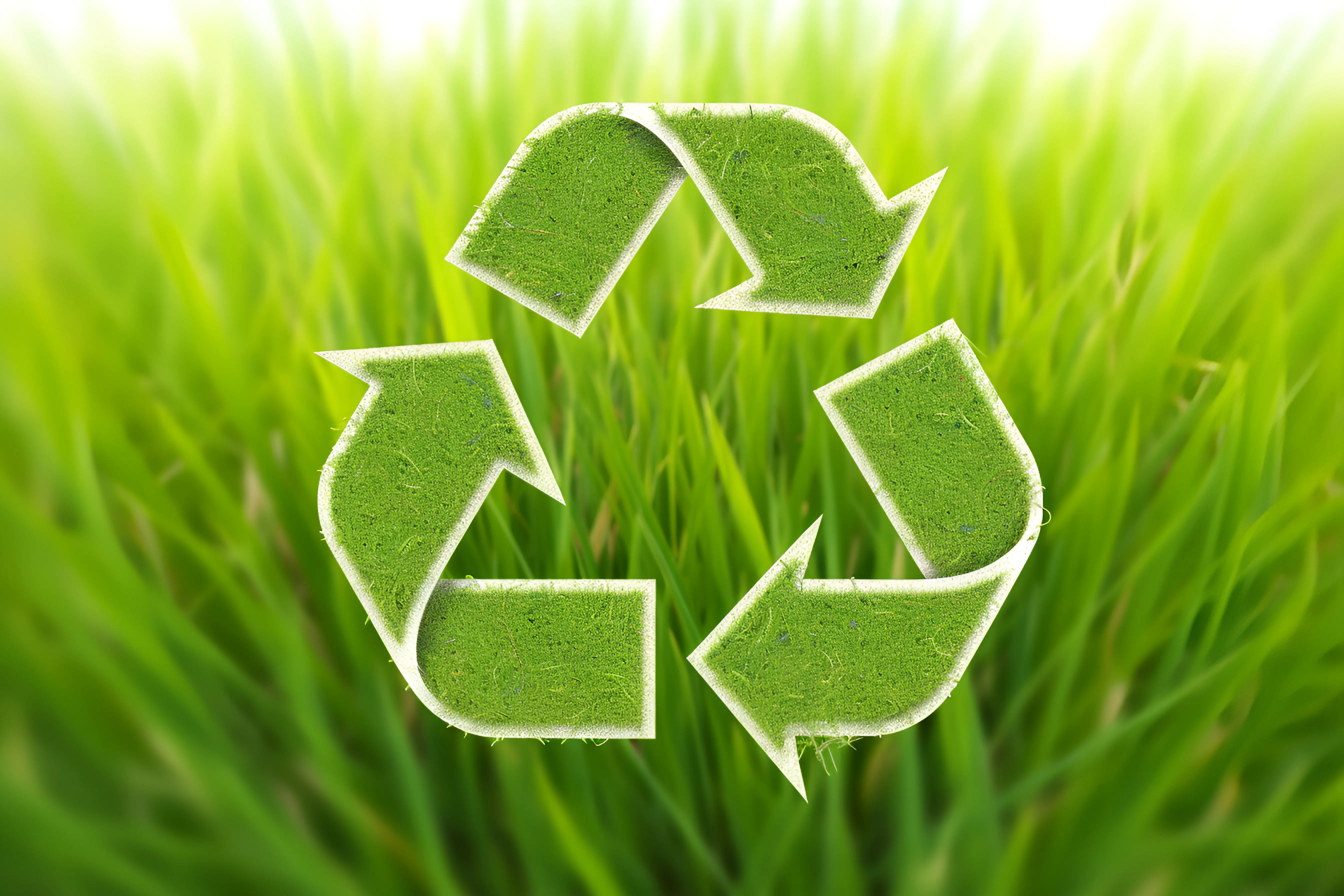Battery recycling reduces landfill waste, prevents 2 billion pounds of lead pollution annually, and conserves valuable resources through efficient material recovery.
Reduction in Greenhouse Gas Emissions
Recycling batteries has the potential to significantly reduce carbon footprints, which is essential to combating climate change. The reuse of used batteries is the result of climate-neutral mining, and by doing so, we can avoid manufacturing new batteries that produce large amounts of carbon dioxide and other harmful gases. The U.S. Environmental Protection Agency (EPA) says that recycling the metals in batteries is 95% more energy efficient than extracting and processing raw materials.
Energy Saving and Emission Reduction
The environmental and energy costs of extracting raw materials such as lithium, cobalt, and nickel are high. For example, producing just one ton of lithium releases more than 15 tons of carbon dioxide. In contrast, recycling batteries can significantly reduce this number because the material has already been refined and less energy is required to process it. Less electricity consumption directly means fewer greenhouse gas emissions in the cycle.
Reduced Demand for Fossil Fuels
It reduces our reliance on fossil fuels, thereby reducing the amount of greenhouse gases emitted into the atmosphere. As you may know, the manufacture of new batteries produces a large amount of greenhouse gases, which mainly come from the fossil fuels used when extracting and processing the materials. By recycling, we reduce the need for energy generated by burning fossil fuels, and thus embark on a path of cleaner, renewable energy.
Impact on the Automotive Industry
The carbon dioxide emissions associated with the automotive industry contribute significantly to global carbon dioxide emissions. Automakers can significantly reduce carbon emissions by integrating battery recycling plants into their operations. For example, the production of electric vehicle (EV) battery packs produces almost 74 kg of CO2 per kilowatt-hour. Recycling these batteries can significantly reduce this number and help the industry move to more sustainable methods.
Quantifiable Benefits
According to the International Energy Agency (IEA), large-scale deployment of battery recycling could save more than 50 million tons of CO2 per year by 2030. This measurable reduction is an example of the importance of recycling to the world’s emissions reduction efforts.

Decreased Ecological Footprint
Battery recycling is a key aspect of reducing the environmental impact of manufacturing and disposing of batteries. By keeping old batteries out of landfills and reusing their rare materials, we can have a significant impact on the global environment.
Minimize Landfill Waste
Such applications can be harmful to the environment, especially to soil and water quality, as discarded batteries often end up in landfills. Toxins such as lead, cadmium, and mercury can seep into the soil and contaminate nearby ecosystems. Recycling batteries keeps these toxic materials out of our natural habitats; minimizing our landscapes and pollution.
Protect Natural Habitats
Through real-time data analysis, we will stop mining raw materials that damage natural habitats or ecosystems. As an example, lithium mining in South American salt flats is used to illustrate how water resources can be depleted and local wildlife habitats destroyed. By recycling batteries, the need for new raw materials is reduced, thereby reducing the land occupied by mining.
Reduce Soil and Water Pollution
Recycling batteries can significantly reduce soil and water pollution. By collecting materials, the recycling process prevents hazardous materials from becoming environmental pollutants. For example, the EU states that recycling lead-acid batteries reduces water pollution by up to 76% and air pollution by up to 80% compared to making new batteries from raw materials
Efficient use of resources
By recycling batteries, we can make the most of existing resources. An example of how this can be done is by recovering used lithium, which can then be used to produce new batteries; by doing this, the impact of lithium extraction is significantly reduced. This helps save resources and reduces the energy and environmental costs of mining and processing.
Reduced Landfill Waste
One of the most important steps to reduce landfill waste (and therefore many environmental issues) is to recycle batteries. Not only that, but when we send old batteries that end up in landfills to recycling centers, we can significantly reduce waste, which means many environmental advantages.
Hazardous Leachate Prevention
Batteries contain heavy metals and chemicals that can leach into soil and groundwater if discarded in landfills. For example, one alkaline battery can contaminate up to 167,000 liters of water with harmful chemicals such as mercury and cadmium. Recycling prevents these toxic substances from leaching, protecting soil and water quality.
Extending the Life of Landfills
Battery recycling helps extend the life of existing landfills. When we reduce the amount of waste, we also need fewer new landfills (which in turn take up large tracts of land and damage local ecosystems). Based on this data, the U.S. Environmental Protection Agency (EPA) estimates that 2% of all trash is electronics, but electronics account for 70% of overall toxic waste. This will have a major impact on improving the way we deal with batteries in landfills.
Enhanced Resource Recovery
These batteries are recyclable, and through recycling, valuable materials such as lithium, cobalt, nickel, and lead can be recovered. This reduces the mining and processing of virgin resources, which in turn reduces the environmental impact of mining these materials by reusing them in new battery production. Another example of a donation from Wecon the Hillstones in Canada: Cobalt recovered from batteries is used to produce new batteries, reducing the need for mining that is energy and environmentally costly.
The International Journal of Life Cycle Assessment states that recycling of lithium-ion batteries can recover up to 95% of cobalt, 85% of lithium, and 90% of nickel. A 99% recycling rate is great – it highlights how easy and environmentally friendly battery recycling can be.
Community and Environmental Health
Directly improves community health by reducing landfills in the form of battery recycling Landfills are common in homes, and minimizing the amount of hazardous waste in these sites can reduce the risk of illness from body contamination. If waste is properly managed, there will be fewer cases of groundwater contamination and the resulting health issues in neighboring communities.

Conservation of Natural Resources
Most importantly, battery recycling is an important process that helps reduce natural resources. By reusing raw materials for batteries, the consumption of virgin resources can also be significantly reduced, while bringing a range of environmental and economic benefits.
Reduce the need for mining
The mining of raw materials for battery production, such as lithium, cobalt and nickel, is an environmentally destructive process. Mining activities lead to deforestation, biodiversity loss and soil erosion. For example, cobalt mining in the Democratic Republic of Congo has caused severe environmental damage and raised serious ethical issues. Recycling batteries reduces the need for these destructive mining practices and protects natural landscapes and ecosystems.
According to the United Nations Environment Programme (UNEP), recycling one ton of batteries saves an average of 1.2 tons of virgin materials. This significant drop in the demand for raw materials clearly demonstrates the role recycling plays in protecting natural resources.
Optimize existing resources
Battery recycling helps maximize the use of existing resources. It will help us move away from the “take-make-waste” extractive industrial model and move towards a more sustainable circular economy, in which we can retain the value of the minerals, metals and commodities that have been mined and reduce the need for further agricultural or natural resource extraction. A great example is the recycling process for lithium-ion batteries, where up to 95% of the valuable metals can be recovered and used again to produce new batteries.
Reduced Environmental Impact
Mining and refining raw materials for batteries, such as cobalt, is extremely costly to the environment. For example, it takes about 500,000 gallons of water to produce one ton of lithium. These environmental costs are reduced when batteries are recycled because the recycling process uses less water and energy.
According to the Institute for Energy Research, battery recycling uses 80% less energy than mining and processing new materials. This translates to a reduction in energy use of more than 35%; an excellent example of how recycling can be both cost-effective and good for the environment.
Sustainability Information
We support environmental and economic sustainability by recycling these batteries and saving the valuable natural resources within them. Recycling helps reduce the amount of new raw materials that need to be extracted from the ground, reducing greenhouse gas emissions and the overall environmental impact of battery production. This sustainable way of working is in line with global ambitions to protect the climate and preserve natural ecosystems for future generations.
Pollution Control
Battery recycling is a powerful tool for pollution control, with significant benefits for both the environment and public health. By diverting batteries from landfills and ensuring they are properly disposed of, we can mitigate all forms of pollution.
Preventing Soil Contamination
Batteries contain hazardous materials such as lead, cadmium, mercury, and other heavy metals. When batteries end up in landfills, these toxic materials can leach into the soil, contaminating it and putting agriculture and wildlife at risk. Recycling prevents the creation of leachate, protecting soil quality and preventing toxins from accumulating.
The Environmental Protection Agency (EPA) says recycling batteries can help reduce land contamination by up to 80 percent. This significant reduction highlights the need to protect the planet by recycling batteries.
Protecting Water Sources
Battery leachate can also enter groundwater and rivers, causing significant water contamination. This contamination can have a serious impact on drinking water sources and water bodies. In this way, we can prevent these harmful chemicals from coming into contact with water resources through battery recycling.
Improving Air Quality
Batteries that are used improperly can also lead to the emission of toxic fumes and greenhouse gases. If batteries are incinerated, they release highly toxic materials that can cause air pollution and lead to health damage. Recycled batteries mean they are not incinerated, which is good for clean air.
According to the International Battery Council, lead-acid battery recycling alone prevents more than 2 billion pounds of lead from entering the environment each year. These figures highlight the vital role recycling plays in reducing air pollutants.
Reduce Industrial Pollution
Mining, smelting, and refractories (such as the production of new batteries from raw materials) are significant contributors to industrial pollution. These processes produce large amounts of greenhouse gases and other pollutants. Battery recycling helps reduce the use of such polluting methods, which can significantly reduce emissions from industrial land use.
According to a study conducted by the International Journal of Environmental Research and Public Health, battery recycling can help reduce industrial pollution by up to 60%. The reduction in production shows the importance of recycling in limiting the ecological impact caused by industrial functions.
